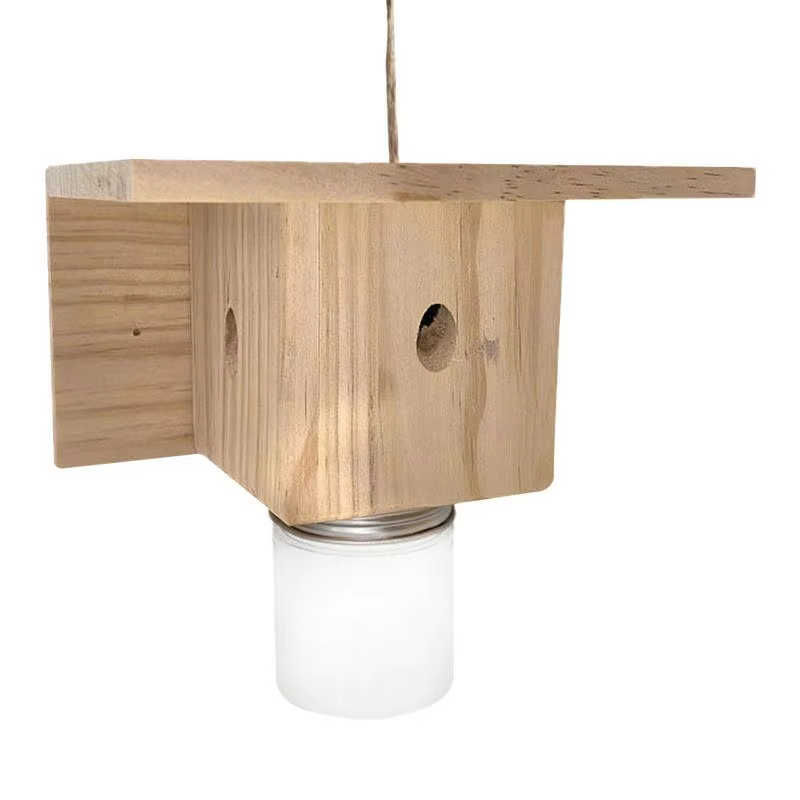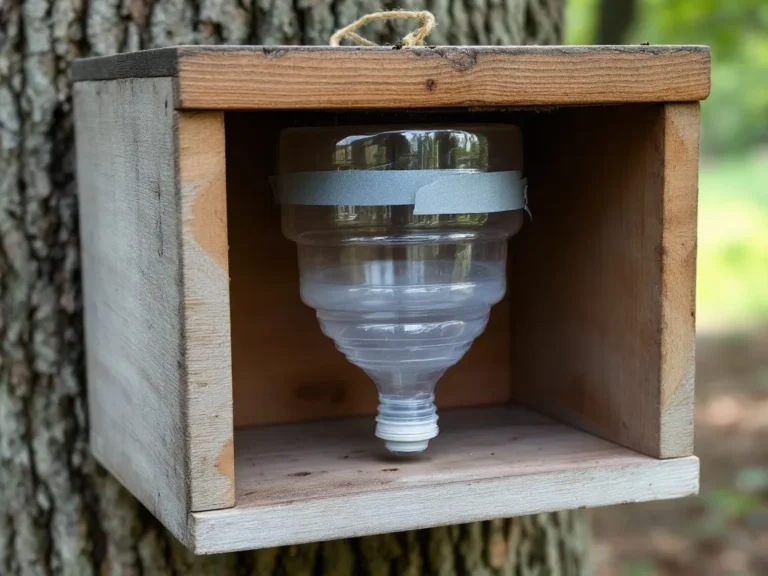When dealing with borer bees, choosing the right trap can make all the difference in safeguarding your wooden structures. Borer bees, notorious for boring into wood to create nests, can cause extensive damage if left unchecked. This guide will help you navigate through the different types of borer bee traps available, so you can find the best solution for your needs.
Types of Borer Bee Traps
1. Wooden Box Traps
Overview: Wooden box traps are designed to mimic the natural nesting sites of carpenter bees. These traps use untreated wood to attract the bees, who mistake the trap for a suitable place to bore and nest.
Features:
- Made of untreated, weathered wood.
- Contains multiple entrance holes to attract bees.
- A jar or plastic bottle at the bottom collects the trapped bees.
Pros:
- Highly effective in attracting borer bees.
- Durable and can be used year after year.
- Eco-friendly, with no chemicals involved.
Cons:
- Requires regular monitoring and emptying.
- Initial setup might be time-consuming.
Popular Models:
- Mac’s Carpenter Bee Trap
- Aspectek Carpenter Bee Trap
2. Sticky Traps
Overview: Sticky traps use adhesive surfaces to capture borer bees. These traps are often placed near wooden structures to catch bees as they approach.
Features:
- Adhesive coating that traps bees upon contact.
- Can be placed in various locations, including walls and beams.
- Disposable, but some models offer replaceable adhesive sheets.
Pros:
- Simple to use and dispose of.
- Can be effective for smaller infestations.
- Low maintenance.
Cons:
- Can trap non-target insects.
- Needs regular replacement of adhesive sheets.
Popular Models:
- Catchmaster Insect Trap
- RESCUE! Non-Toxic TrapStik
3. Bottle Traps
Overview: Bottle traps use plastic bottles combined with attractants to lure and capture borer bees. These traps are easy to make and can be hung around the property.
Features:
- Utilizes plastic bottles and bait.
- Often homemade, with various DIY recipes available.
- Can be easily hung from trees or eaves.
Pros:
- Cost-effective and easy to make.
- Can be placed in multiple locations.
- Effective in catching a large number of bees.
Cons:
- DIY traps may not be as durable.
- Requires regular maintenance and monitoring.
Popular Models:
- DIY Bottle Traps
- Commercial Bee Bottle Trap Kits
4. Electronic Traps
Overview: Electronic traps use UV light to attract and electrocute borer bees. These traps are often used for indoor spaces or enclosed areas.
Features:
- Uses UV light to attract bees.
- Electric grid kills bees upon contact.
- Can be plugged into standard outlets.
Pros:
- Highly effective in enclosed spaces.
- Low maintenance, with easy cleanup.
- No chemicals involved.
Cons:
- Limited to indoor use.
- Higher initial cost compared to other traps.
Popular Models:
- Aspectek Electronic Insect Killer
- Flowtron BK-15D Electronic Insect Killer
Choosing the Right Borer Bee Trap
When selecting a borer bee trap, consider the following factors:
- Infestation Level: For severe infestations, multiple traps or a combination of different types may be necessary.
- Location: Some traps are better suited for outdoor use, while others are designed for indoor or enclosed areas.
- Maintenance: Consider how much time you can dedicate to monitoring and maintaining the traps.
- Environmental Impact: Opt for eco-friendly traps if you prefer to avoid chemicals.
Final Toughts
Protecting your home from borer bees requires choosing the right type of trap. Wooden box traps, sticky traps, bottle traps, and electronic traps all offer unique benefits and can be effective in different situations. By understanding the features and pros and cons of each type, you can make an informed decision and keep your wooden structures safe from damage.





